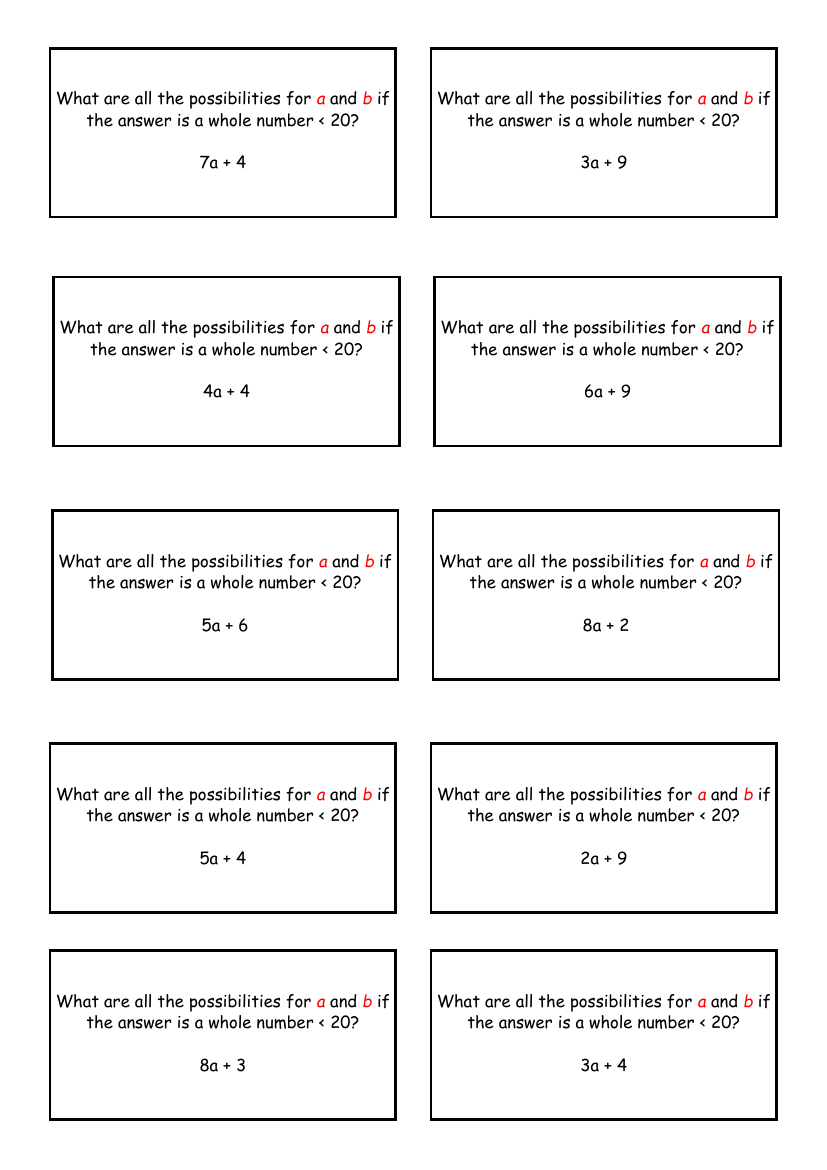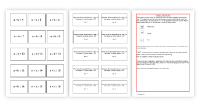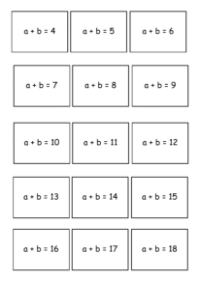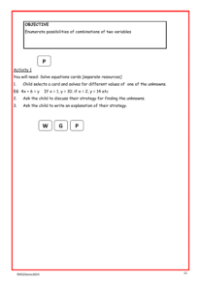What are the possibilities

Maths Resource Description
To determine the possibilities for the variable 'a' in each of the given expressions where the result is a whole number less than 20, one must solve for 'a' by ensuring the entire expression does not exceed 19. The variable 'b' is not present in these expressions, so the focus will solely be on 'a'. For example, in the expression 7a + 4, 'a' must be such that when multiplied by 7 and then added to 4, the result is a whole number less than 20. By performing this calculation, we find that 'a' can only be 2 or less, as 7(2) + 4 = 18, which is the highest whole number below 20 that can be achieved with this expression.
The same process is applied to each of the expressions. For instance, in the expression 3a + 9, 'a' can be 0, 1, 2, or 3, as these values would yield results of 9, 12, 15, and 18, respectively. Each expression has a set of possible values for 'a' that satisfy the condition of the result being a whole number less than 20. For expressions with subtraction, such as 7a - 4, the values of 'a' are found similarly, but with the understanding that the subtraction must not result in a negative number. To illustrate, 'a' can be 3 or more in this case, as 7(3) - 4 = 17, which is within the specified limit. By evaluating each expression in this manner, one can list all the whole number possibilities for 'a' that meet the given criteria.



